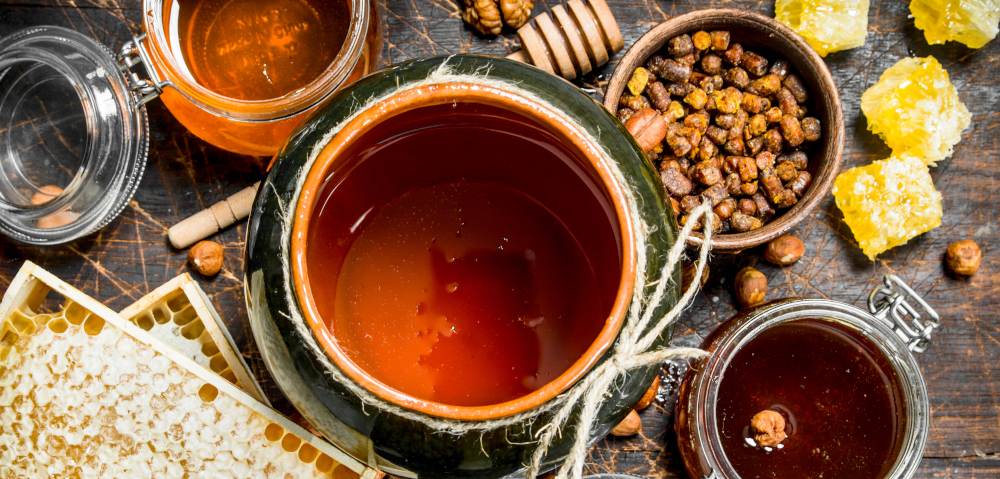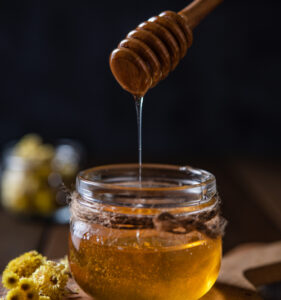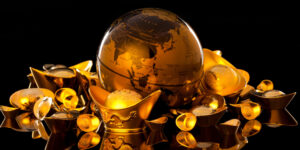
In a world that moves faster than our immune systems can keep up with, we still turn to nature’s slowest workers for something remarkable, honey. Not just any honey, golden honey. It’s the kind that glows on a spoon, thick and unapologetically sticky, the kind your grandmother insisted would cure everything from colds to bad moods. But somewhere between the home remedy aisle and your Instagram feed, golden honey became more than just honey. It became a colour, a brand, a wellness obsession, and depending on where you’re standing, even a watermelon.
Let’s rewind. What exactly is “golden honey”? Is it turmeric-infused? Raw and unfiltered? A makeup shade? The answer is yes, and also, not quite. Ask any wellness blogger, and they’ll tell you golden honey starts with turmeric. That warm, bitter spice that stains your fingers and your Tupperware, and somehow, they swear, your soul in the best way.
Stir turmeric into honey, throw in some ginger and a dash of black pepper, and what you’ve got is more than just a pretty colour. In traditional Ayurvedic medicine, this mixture is believed to reduce inflammation, boost immunity, and aid digestion. There are YouTube recipes, Pinterest charts, even WhatsApp aunties forwarding you screenshots with capital letters, “TRY THIS FOR COUGH AND IMMUNITY”.
It’s health advice with centuries behind it, dressed up for a modern audience that wants wellness without the wait.
But is it magic? Science leans on the cautious side. Turmeric does contain curcumin, which has proven anti-inflammatory properties. Black pepper enhances its absorption. Honey is a natural antibacterial. Together? They might not change your life, but they could help it taste better. Especially in warm water, on toast, or licked from a spoon when no one’s watching.
And even if you’re skeptical, there’s no denying the visual appeal. Golden honey glows. It looks rich. It looks healing. It looks… like it might fix things, or at least let you pretend for a minute that you’ve got things under control.
The Raw and the Real
For the purists, golden honey is something entirely different. It’s not spiced. It’s not stirred. It’s raw. Raw honey is what you get when the bees do their work and humans don’t mess with it. No pasteurization. No filtering. Just honey, the way it’s been made for thousands of years. In this version, “golden” isn’t a colour you add, it’s a colour you notice. A natural glow, not quite amber, not quite yellow. Just… golden.
 It’s thick. It crystallizes. It contains traces of pollen and propolis, which are often lost in commercial versions. Some call it messy. Others call it medicine.
It’s thick. It crystallizes. It contains traces of pollen and propolis, which are often lost in commercial versions. Some call it messy. Others call it medicine.
In South Africa, you’ll find raw honey at farmers’ markets and in the back of small general dealers. It might come in reused jars with handwritten labels. You might meet the beekeeper. There’s no Instagram aesthetic, but there’s something better, context. You taste the land. The season. The flowers. The work.
People who swear by raw honey will tell you it helps with allergies, digestion, even wounds. Maybe it does. Maybe it doesn’t. But there’s something undeniably honest about it, in a world where even fruit has a marketing team.
And then there’s the weird stuff. Golden Honey Watermelon? It’s real. It’s not even metaphor. It’s a hybrid watermelon variety with bright yellow flesh, reportedly sweeter than the classic red. There are seed catalogs and backyard gardeners obsessed with it. Somewhere, someone is naming a smoothie after it.
Golden Honey Sand Wax? Also real. It’s granular wax, the kind used to make refillable candles. It smells like marketing, sure, but also maybe a little like vanilla and ambition. Golden Honey Foundation? That’s a shade. A very specific golden undertone makeup tone designed to match warm, radiant skin. Some brands have trademarked the name. Others just use it descriptively. Either way, it’s part of the growing trend of makeup sounding like dessert.
The phrase “golden honey” has stopped meaning just honey. It’s become aesthetic currency. Because in the age of social media, language shifts. Everything golden sounds expensive. Everything honey sounds soft. Put them together, and suddenly it’s packaging, lifestyle, aspiration. But maybe that’s okay. Maybe we need things that remind us of warmth. Of care. Of slowness.
Whether it’s in your cup or on your cheekbones, golden honey carries something primal. It’s light in a bottle. Sweetness you can hold. And it makes sense that in a world that’s often bitter, we reach for it.
So the next time you see golden honey, on a label, a post, a plate, ask yourself, what version am I tasting today? Is it the health remedy handed down in whispers and kitchen shelves? The raw, floral syrup pulled from real bees and real places? The metaphor we keep returning to because it makes the day feel softer?
Or is it just a name, another buzzword in a sea of them, golden until the next shine comes along?
Whatever it is, it sticks. On your tongue. In your memory.
That’s the thing about golden honey.
It doesn’t just sweeten, it stays.



